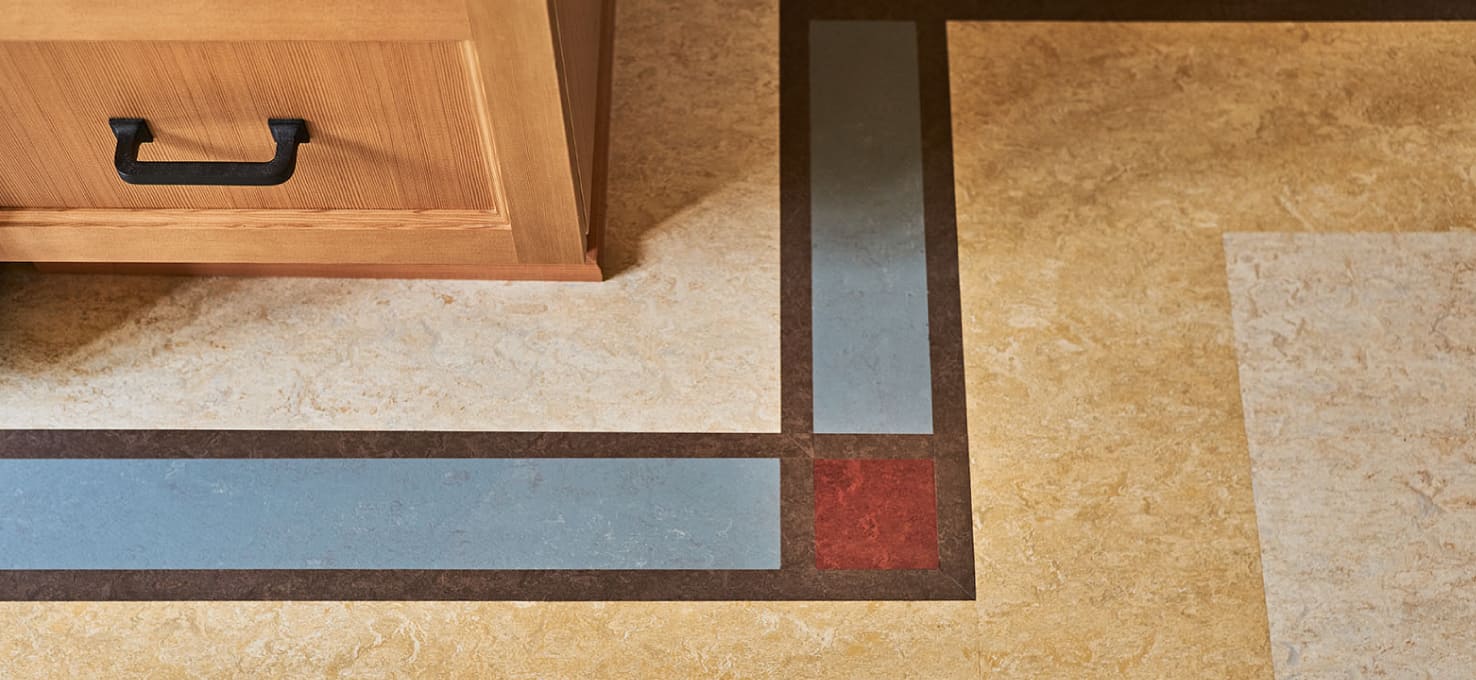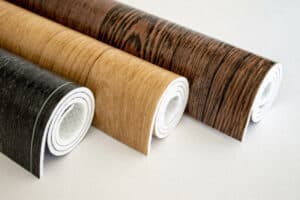
Interiors
What Are The Benefits of Linoleum Flooring?
Linoleum may get a bad rap for being dated, but thanks to its combination of durability and sustainability, linoleum is experiencing a resurgence. Whether you’re choosing minimalist solid colors or classic checkered patterns, linoleum flooring has a timeless appeal that is compatible with many design styles. We’re detailing the benefits of linoleum to help you decide whether it’s a good fit for your next remodeling project.
What is Linoleum Flooring?
Often confused with vinyl, which is made with manmade materials like PVC, linoleum is made from natural materials and is an environmentally friendly flooring material. The main ingredient in linoleum is linseed oil mixed with cork dust, pine resin, ground limestone, wood flour, and pigments – this combination is pressed onto a woven jute backing. Because it is made from natural materials, linoleum is completely biodegradable, and because scraps leftover from the manufacturing process can be ground into linoleum powder to go back into the mixer, linoleum is almost infinitely recyclable.
Linoleum is also water-resistant and comes with a durable factory finish, adding to the long-lasting appeal of the flooring material. The color and pattern of linoleum also go all the way through, as opposed to vinyl flooring, which can fade away or disappear when nicked or scratched. Available in sheets, tiles, or planks, linoleum offers a plethora of design options in a variety of patterns, even faux-natural looks like marble.
Curious about marble-look linoleum? Check out this Custom Laundry Room Project in Portland, OR.
What is the difference between Marmoleum and linoleum?
Marmoleum is a modern name brand for natural linoleum manufactured by Forbo Flooring Systems. Marmoleum is safe, durable, and easy to clean. Plus, since it is manufactured with natural ingredients, it contributes to a healthy indoor environment. This type of linoleum flooring works well for all residential and commercial applications and is more often used in projects by the Neil Kelly design team over straightforward linoleum.
Average Cost of Linoleum
Linoleum is typically more expensive than vinyl flooring. On average, sheet linoleum flooring rolls cost between $2 to $2.50 per square foot and linoleum tiles average about $3.50 to $5 per square foot, while a vinyl sheet is $1 to $2 per square foot and luxury vinyl plank averages at $3 to $9 per square foot.
While vinyl is less expensive than linoleum up front, linoleum can sometimes last twice as long as vinyl, provided you choose a high-quality product from a reliable manufacturer and strategically select the beginning installation location.
Pros and Cons of Linoleum Flooring
Pros of Linoleum
- Durable and can last up to 40 years with proper care
- It is scratch-resistant and can hide potential scratches better
- It is antistatic, water-resistant, and antimicrobial
- Made with renewable materials and is biodegradable
- It does not emit volatile organic compounds (VOCs), which may have health effects
Looking for linoleum inspiration for your kitchen remodel? Explore this Custom Kitchen Renovation in Portland, OR.
Cons of Linoleum
- It is a softer material and can be dented by heavy appliances or furniture
- Without proper sealing, it is porous and water can seep in if not mopped up right away
- It typically requires professional installation, which can increase its price
- Can darken over time if exposed to direct sunlight
Is Linoleum Right for Your Home Project?
Typically, the best locations for installing linoleum are in kitchens, bathrooms, mudrooms, and basements, thanks to its water-resistant nature. Linoleum is easy to clean by sweeping regularly, wiping up any spots or spills, and using linoleum-specific cleaning products. While linoleum can be more expensive than vinyl, its durability can offset this.
Neil Kelly’s design/build remodeling experts can help you determine whether linoleum is the right choice for your home renovation project.
Get in touch with us to schedule a complimentary consultation.